Seasons – Fall 2017
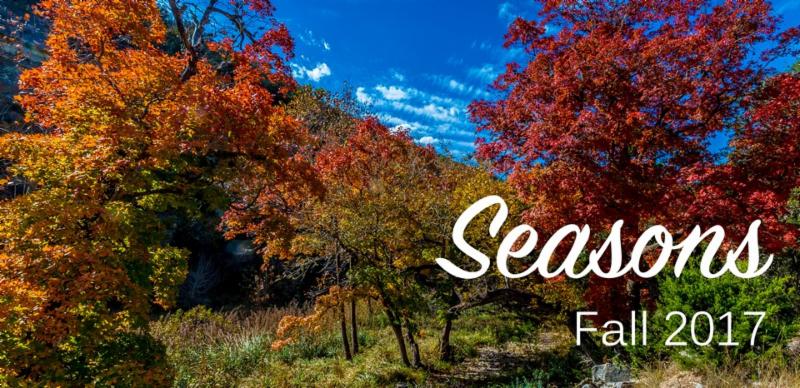
From the Plateau Land & Wildlife Management Team,
The fall season is upon us once again and just like that, it is time for another “Seasons” from all of us here at Plateau. Before we get into the contents of this issue we want to take moment to turn our thoughts to all of those impacted by Hurricane Harvey. Many of our clients and landowners who we know were affected in some way and we want you all to know that we are thinking about you. If any products you purchased from Plateau were destroyed or you have concerns about your wildlife management program at this time we want you to contact us so we can help however we can. We also want to thank all of the first responders and (extra)ordinary citizens who jumped in to help their neighbors. The effects of the storm have been hard to watch, but if there is a bright point in any of this it has been seeing everyone come together to help each other in this time of need. Our Texas is indeed a very special place.
In this issue of Seasons, we’ll cover updates on chronic wasting disease regulations, the disappearing Texas horned lizard, an exciting new wildlife land survey and Hog-Gone®, a toxicant for feral hog management.
Don’t forget about our seminars and webinars happening now – see below for more information. For every seminar attendee we will donate $5, and for every new Wildlife Management plan sold before the end of the year, $50 will be donated directly toward Houston and Gulf Coast recovery.
We think you’ll enjoy and gain from this issue of Seasons and we hope the articles and information bring some joy and peace to what are pretty hectic times for many. Autumn is a season of abundance, harvest, and preparation for next year, both for the land and the landowner. It’s great to be a Texan and to know that our best is yet to come.
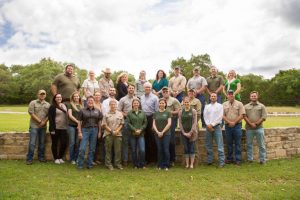 Until next season and Seasons,
Until next season and Seasons,
The Plateau Team
Table of Contents
Love Creek’s Annual Butterfly Counts
Fall Wildlife Management Activities Checklist
Chronic Wasting Disease: An update with new regulations
Disappearing Texas Horned Lizard
The Wildlife Land Survey
Feral Hog Management – Hog-Gone® Field Trials
Plateau Fall Seminars and Webinars
Service Spotlight: Service Agreements
Will vs Trust: A quick and simple reference guide
Plateau Land Group Featured Listing
Love Creek’s Annual Butterfly Counts
By Sarah Kahlich, AWB ®, Senior Wildlife Biologist
Each year after butterflies start showing up in Texas, the Nature Conservancy at Love Creek near Medina hosts its annual butterfly count. Numerous ranches in the vicinity of the preserve volunteer their property for this count and volunteers sign up to participate. Usually, the butterfly count takes place in mid-June, but this year it was postponed to mid-July due to rain.
This year was my first butterfly count and Love Creek’s 8th. The morning began with a meeting at The Core in Medina. Once everyone had a chance to eat breakfast, team assignments were announced and general safety information was read aloud to the volunteers. After a few quick group photos, everyone headed out to their group vehicle and descended onto area ranches. While on the drive, the question of who had butterfly identification skills was the first to arise. I quickly pointed out I had little to no experience identifying butterflies. Luckily, we had one modest lady who said she knew some butterflies, which was a lie because she knew all the butterflies we saw.
As you can imagine, counting butterflies can be tricky. Some of them fly really fast! Then there were the grasshoppers that would fly short distances and cause us to stop (one on more than one occasion) to try and identify it until it was quickly realized it was not a butterfly. A butterfly field guide and binoculars are a must for learning butterflies during the count. Having someone that is really good at identifying is even more important. Depending on the wind speed some butterflies quickly whip past you and all you can yell out is, ‘BUTTERFLY!’ before they are long gone. I found myself following behind our expert butterfly counter to get a glimpse of some speedy butterflies. Sometimes they moved slowly enough you could look at them through binoculars to see their color pattern, and I quickly learned to identify a Queen’s butterfly (at first I thought they were Viceroy’s just because they were orange and black looking).

Pipevine swallowtail eggs on the underside of a pipevine plant.
The ranches we visited had a fair amount of antelope-horn milkweed, so we started to look for butterfly eggs on the undersides of their leaves. We found a handful of eggs on milkweed and only one (teeny-tiny) caterpillar eating on a leaf. The most commonly occurring butterflies on our four ranches were queen’s, pipevine swallowtails, and dogface sulfur butterflies. I think my favorite was the Dogface butterfly. Their flight pattern is erratic and they hardly ever stop to eat or rest. This made them easy to identify as they flitted around open fields – though I did see one sitting on a plant which confused my identification at first.
At the last property we visited, we saw a pipevine laying eggs on its namesake, a pipevine plant, aka swanflower (Aristolochia erecta). We waited for her to leave and quickly went to inspect the plant she was hovering around. There were 9 freshly laid eggs. This small herbaceous vine is really inconspicuous but resembles a pitcher plant.
This year the total number of butterflies species observed was 67 with 769 individual butterflies counted. Last year the Love Creek count placed 2nd in Texas and 7th in the United States (out of 453) with 72 species identified. I’m not sure where we placed this year, though the combination of the heat and the later than usual date might account for seeing fewer species of butterflies during this year’s count.
If you are interested in a crash course in butterfly identification, consider volunteering for a butterfly count near you. The North American Butterfly Association (NABA) website has a map that shows when and where butterfly counts occurred this year, as well as the name of the person to contact. The website is naba.org/counts/participate.html and from this page you can click a link to the map of where butterfly counts occur all over the U.S. If attending a butterfly count is not your cup of tea, but you enjoy recording them or any other wildlife, you can participate in citizen science by downloading the iNaturalist app. Even if you are unsure of the species of butterfly or other wildlife you have observed, the app can help with identification as well.
Back to TopBack to Top
Fall Wildlife Management Activity Checklist
By Kameron Bain, Business Development Manager
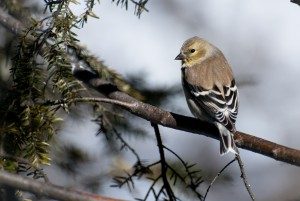 Fall is an important time of year for landowners in wildlife management. With the end of the year quickly approaching, be sure to review your wildlife management plan to make sure you are meeting all your requirements and that you have all the proper documentation. There are several key activities to be done in the fall and if you find that you have fallen behind there are plenty of activity options to choose from.
Fall is an important time of year for landowners in wildlife management. With the end of the year quickly approaching, be sure to review your wildlife management plan to make sure you are meeting all your requirements and that you have all the proper documentation. There are several key activities to be done in the fall and if you find that you have fallen behind there are plenty of activity options to choose from.
- Wintering and Resident Bird Survey – Start November 15
- Remote Camera Wildlife Survey
- Imported Red Fire Ant Control
- Brush Management
- Re-seeding wildflowers and native plants
- Strip mowing and Discing – Start November 1st
- Chemical control of Huisache and prickly pear
- Cut-stump herbicide treatments
- Tree and shrub planting – Start late fall/winter
- Brush Pile Construction
- Products Installs – Feeders, water tables, and shelter
Chronic Wasting Disease: An update with new regulations
By Nick Fisher, Wildlife Services Technician
Hunting in Texas is currently over a two-billion-dollar industry that is supported by rural lands and landowners that will persist as long as the territories are available. Since its Texas emergence in 2012 in a free-ranging mule deer population, chronic wasting disease has been changing the game for hunters across the state. As a follow-up from Shane Kiefer’s article from Fall 2015, I will be examining new regulations and CWD management that will be set in place from the Texas Parks and Wildlife Department (TPWD) along with the Texas Animal Health Commission (TAHC) in an attempt to control the spreading of CWD.
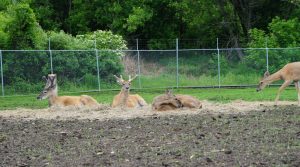 What Hasn’t Changed
What Hasn’t Changed
Chronic wasting disease is still here. As of July 6, 2017, 50 cases of CWD have been confirmed in Texas and the disease is still spreading. The neurological disease is only seen in the Cervidae family which includes deer, elk and moose – although Norway has attempted to cull some 2,000 reindeer after three cases were discovered to contain the prions. The prions are still persisting in the land long after the individuals infected are gone. No states have eliminated CWD completely; however, there are methods in place to slow the spread. The Centers for Disease Control recommend getting susceptible species tested before consumption, although no evidence claims humans can be infected by CWD. The good news is in the regulations and management TPWD and TAHC have set in place for CWD Management.
What’s New between Hunters and TPWD/ TAHC
As a necessary precaution, CWD Management Zones will be set in place for the 2017-18 hunting season within certain areas of Texas including the Trans-Pecos, the Panhandle and South-Central Texas. Deer harvested within these containment and surveillance zones must be brought to a TPWD check station within 48 hours after harvesting. Although not required outside of these zones, TPWD recommends sampling of all deer harvested in order to act quickly to any new emergences of the disease. Deer head waivers will be issued to those wanting to take intact heads to a taxidermist outside CWD zones. Also, permitted deer will be restricted from being moved into and out of CWD zones. Along with TPWD’s new regulations, Texas Animal Health Commission now requires all susceptible exotics (red deer, sika, elk, or moose, and any hybrids of these species) harvested statewide to be tested as well.
Future Deer Hunting in Texas
It has been 50 years since the discovery of prions in captive mule deer in Colorado. CWD has spread to 24 states in the U.S., as well as Canada, and continues to be found in new locations, including Norway’s recent reindeer discovery. Mandatory regulations from TPWD and TAHC will aid in controlling the spread of the disease to animals, as well as to the environment, although it may never disappear from an area it now inhabits. Due to the ability to bind to minerals in the soils, even with testing of individuals for years, we may be blind to the existence of the disease in some areas. Outside of Texas, Dr. Mark Zabel with Colorado State’s immunology department plans to do some prescribed burning on National Park Service land, hypothesizing this will rid the environment of prion-infested vegetation where the disease is known to be present. If the fires are successful, the prions will still be present in the environment but fewer animals will be ingesting them due to less prion-covered vegetation availability and therefore less will become infected.
Although thought to be worse in areas where deer are most dense, the disease is spread vastly due to anthropogenic factors, movement of deer between facilities and movement of infected carcasses. Indirect transmission from the environment allows for the spread throughout a region between infected and uninfected transmission.
Dr. Zabel’s attempt at managing the land where prions are most present is ongoing, but TPWD and TAHC have already set in place the CWD management plan in Texas. Responsible hunting practices are necessary to reduce the severity of the disease to the vulnerable populations and for future enjoyment of the sport. Chronic wasting disease is not going anywhere anytime soon but with the help of private landowners and each individual hunter, we can protect our natural resources for generations to come.
As always, Plateau’s mission is to assist “owners of rural land to increase value by conserving, restoring and/or improving their property’s native wildlife and habitats through science-based solutions.” Unhealthy deer should be reported immediately to TPWD authorities, but if you have concerns or questions please give us a call.
The Texas Parks and Wildlife website has available all confirmed cases of CWD in Texas and also has more information available regarding new rules and regulations set in place for hunting in Texas and can be found here.
Back to TopBack to Top
Disappearing Texas Horned Lizard
By Kyle Lassiter, Staff Biologist I
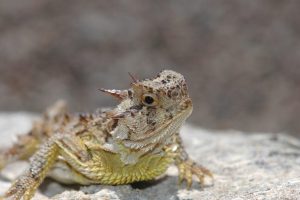 The Texas Horned Lizard (Phyrnosoma cornutum ) is arguably the most iconic species of herpetofauna in Texas, but at this point for most, it is just a fond childhood memory. During the warm months in late spring and summer, some of you may have been lucky enough to still find some Texas Horned Lizards lounging in the sun on your property before they returned to hibernation around September or October. For others, you may have noticed over the past few decades the gradual disappearance of our official state reptile from various regions of Texas and the only place you see them anymore is on a custom license plate. Present-day Texas Horned Lizards are believed to be restricted to only the western third of Texas and are fully protected by the state and considered a threatened species by the Texas Parks and Wildlife Department.
The Texas Horned Lizard (Phyrnosoma cornutum ) is arguably the most iconic species of herpetofauna in Texas, but at this point for most, it is just a fond childhood memory. During the warm months in late spring and summer, some of you may have been lucky enough to still find some Texas Horned Lizards lounging in the sun on your property before they returned to hibernation around September or October. For others, you may have noticed over the past few decades the gradual disappearance of our official state reptile from various regions of Texas and the only place you see them anymore is on a custom license plate. Present-day Texas Horned Lizards are believed to be restricted to only the western third of Texas and are fully protected by the state and considered a threatened species by the Texas Parks and Wildlife Department.
Declines in Texas have been related to the spread of imported red fire ants, use of insecticides, habitat loss/alterations, and over-collecting for the pet and curio trade. Harvester ants comprise about 70% of their diet and are essential to their survival. The introduction of imported red fire ants (Solenopsis invicta) has had a significant impact on harvester ant colonies throughout Texas. They are extremely aggressive and territorial ants and typically outcompete harvester ants for food and space. Insecticides have also been detrimental by causing direct illness or death as well as killing off harvester ants colonies. Horned lizards were also collected very heavily in the past for the pet trade and by locals, increasing the pressures already affecting the species.
Texas Horned Lizard Facts
Texas Horned Lizards inhabit a variety of habitats but research has noted key similarities among occupied habitats. They tend to occupy open arid and semi-arid regions with sparse vegetation (deserts, prairies, playa edges, bajadas, dunes, foothills) with grass, cactus, or scattered brush or scrubby trees and patches of bare ground. Individuals will dig burrows or occupy ones previously constructed by another animal and use it for hibernation, nesting and insulation purposes, therefore they are commonly found in loose sand or loamy soils. The final stipulation is the presence of their primary food source: harvester ants.
Besides their peculiar look, they also have some of the most unique and unusual defense mechanisms of any herpetofauna found in Texas. The first line of defense for the horned lizards is to avoid detection from predators altogether. They possess the ability to lighten or darken their color to camouflage themselves with the ground or soil where they are. Using this camouflage they will then flatten out their bodies and remain still or slightly bury themselves in the soil around them making them very difficult for predators to detect. If they begin to feel threatened they will then puff out their bodies causing the horn-like scales on their bodies to protrude. These protruding scales serve multiple purposes. The first is to make it appear more intimidating to the predator and the second is to make it more difficult for snakes, birds, or a smaller predator to swallow.
For larger predators such as foxes, coyotes, or dogs, the Texas Horned Lizard has another ace up its sleeve. Instead of puffing itself out it will squirt an aimed stream of blood out from the sinuses behind their eye. They do this by restricting the blood flow that is leaving the head, thereby increasing blood pressure and rupturing tiny vessels around the eyelids. This action not only confuses would-be predators giving them ample time to escape but is believed to contain chemicals that are foul tasting to canines. This defense action is a costly one, however, and expels around a quarter to a third of the lizard’s blood so it is used only when absolutely necessary.
What can I do to help?
If you have some Texas Horned Lizards on your property or know they are in the region and would like to see them on your place there are different things you can do to encourage their presence and it could possibly count as an activity for your Wildlife Management Plan.
- Maintain a healthy and diverse habitat – Probably the best strategy for bringing them back is support and/or create appropriate habitat to promote the conservation of the lizard and harvester ants. A diverse native bunchgrass community will allow horned lizards to move more freely instead of thick mat-like grasses that can restrict their movement. These native bunch grasses are also important to harvester ants and attract a diversity of native invertebrates which can be beneficial for young juvenile lizards.
- Try not to overgraze – The grasses should be protected from overuse by livestock as overgrazing can greatly reduce needed cover and make them more susceptible to predation. If livestock are present on your property try using a rotational or low-intensity grazing system to minimize effects.
- Prescribed Fires – Prescribed fires not only will create a more diverse habitat but will also remove excess ground litter that will impede the movements of horned lizards. Burning should be done in patches instead of very large areas. A specialist can survey your property and develop a 5-7 year rotational burn plan that could have great benefits.
- Imported Red Fire Ant Control – Monitoring the property throughout the year for the presence of imported red fire ants should be conducted annually. If imported red fire ants are present, measures should be taken to control them in a way that doesn’t negatively affect horned lizard populations. Broadcast treatments for fire ants should be avoided as most pesticides used to kill fire ants also kill harvester ants. Fire ant mounds should be treated individually with bait to reduce the possibility of affecting non-targeted insect species.
- Surveying – Actively monitor your property for the requirements we talked about earlier to see if your property is suitable. If they might be present on your property, run transects throughout your property documenting their presence or absence. Record all incidental sightings when just wandering around. The data collected is valuable and can help us understand their absence, presence, or trends in the population.
Although they aren’t federally endangered, the fight to keep this iconic Texas species a part of Texas is ongoing and I urge you to do your part. Some believe that sentiment and nostalgia can be powerful motivators and I hope it may prompt some to make an effort in the restoration of this species. Let us do what we can to make sure that our future generations get the pleasure to experience the unique wildlife that the beautiful state of Texas beholds like the Texas Horned Lizard.
Back to TopBack to Top
The Wildlife Land Survey
By Lee Burton, Owner of Naturalists Venture & Certified Cybertracker Conservation Tracker
Do you know what animals inhabit your property, how they spend their time, what they eat, where they sleep, and what kind of habitat they prefer? Do you want to learn more about their behavior, including where to place trail cameras and other factors to consider when making management decisions to increase biological diversity and maximize habitat for certain species? Do you want to find ways to simply enhance the enjoyment of your land?
If so, then consider getting a Wildlife Land Survey for your property. This exciting new offering may be just right for you and your property and will count toward your required Wildlife Management activities in the Census category. An expert in wildlife tracking and sign identification will traverse different habitat areas on your property and document the occurrence of animal signs in each zone, citing specific indicators of their presence along with coordinates of where each sign was found on your land.
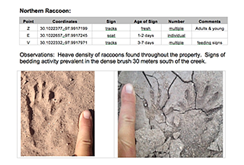 You will receive a comprehensive report that not only shows you the pictures and location of where the tracks and signs of each species were found but will also explain each finding so that you will learn for yourself how to interpret signs that you find on your property in the future.
You will receive a comprehensive report that not only shows you the pictures and location of where the tracks and signs of each species were found but will also explain each finding so that you will learn for yourself how to interpret signs that you find on your property in the future.
The process will start with a property overview that includes a review of the land’s main features with identification of key topographic and habitat areas (riparian zones, cedar breaks, canyons, grasslands, etc.), management history, historically present native fauna, and any known invasive animals. Based on this information, likely areas of feeding, bedding, breeding and animal corridors will be ear-marked for investigation and a wildlife specialist will then visit the property, traversing it on foot to find and record animal signs.
The types of signs that will be analyzed include tracks and trails, scat, pellets, rubs, browsed plants, beds, dens, wallows, kill sites, carcasses, and skulls. Upon completion of the survey, a formal report will be generated that documents what animals were detected, along with photos of the particular spoor and a map showing where it was found on the landscape. It also will also explain each finding so that you will learn for yourself how to interpret tracks or signs that you find on your land in the future. The survey will be primarily focused on identifying medium to large mammals, but will also include noteworthy birds, reptiles, and amphibians.
The results of a survey can be valuable in numerous ways:
- For identification of important habitat areas and corridors to protect highly valued, rare, or unusual animals;
- to select ideal locations to set up camera traps, track plates, or observation posts;
- to help inform where to conduct or avoid certain land management activities such as prescribed burns, supplemental feed, trail or road construction, and many other tasks related to increasing biological diversity.
- to give you an even greater appreciation for your land, thus enhancing your enjoyment of it and giving you a deeper connection to it.
If you want to learn more about your property from a pro while simultaneously taking advantage of an opportunity to fulfill a 2017 Census Activity, call Plateau today to schedule a Wildlife Land Survey or to get more information.
Back to TopBack to Top
Feral Hog Management – Hog-gone® Field Trials
By David Riley, Staff Biologist
 Earlier this year Kaput®, a warfarin-based feral hog toxicant, was approved for general use by the EPA and as a state-limited-use pesticide by the Texas Agriculture Commissioner, Sid Miller. Since that time the company behind the production of Kaput® decided to pull their production registration here in the state of Texas due to overwhelming opposition and threat of lawsuits. The Texas legislature got involved as well in 2017 and filed HB 3451, which would require feral hog toxicants to go under scientific study by a state agency or higher education institution. The study would focus on the economic and environmental consequences of using a feral hog toxicant in the state. The bill was left pending in committee.
Earlier this year Kaput®, a warfarin-based feral hog toxicant, was approved for general use by the EPA and as a state-limited-use pesticide by the Texas Agriculture Commissioner, Sid Miller. Since that time the company behind the production of Kaput® decided to pull their production registration here in the state of Texas due to overwhelming opposition and threat of lawsuits. The Texas legislature got involved as well in 2017 and filed HB 3451, which would require feral hog toxicants to go under scientific study by a state agency or higher education institution. The study would focus on the economic and environmental consequences of using a feral hog toxicant in the state. The bill was left pending in committee.
As you might remember from my previous Seasons article, I mentioned another toxicant that was being researched for feral hog control, sodium nitrite, known by its product name Hog-Gone®. Field trials are required to get EPA approval for use in the US. The United States Department of Agriculture (USDA) and the Animal and Plant Health Inspection Service (APHIS) have recently released the draft environmental assessment for comments from the public. This is a very important step in the approval process. The draft assessment can be found at the following link: regulations.gov/document. Public comments and concerns are highly recommended and can be useful when developing the study of the next few months. Comments are due by September 30, 2017.
Sodium nitrite is a food preservative used in the manufacturing of many of the foods we eat today. Sodium nitrite blocks the function of hemoglobin, the protein in blood that allows oxygen to be carried throughout the body, by converting it to methemoglobin. Natural processes in the body trigger an enzyme to reverse the methemoglobin back to its original state, but in high doses, it can be lethal. This is not something we as humans have to worry about since we only consume a negligible amount and our bodies are equipped with higher levels of the enzyme that counteracts the effects. Feral hogs, on the other hand, have low levels of the enzyme needed which makes them susceptible to the effects of sodium nitrite. In short, sodium nitrite blocks the feral hog’s body ability to transport oxygen to its brain and other organs, which inevitably leads to unconsciousness and death.
These field trials are focused on studying and recording the impacts of sodium nitrite on other species, including humans, as well as its success at controlling a localized population of feral hogs. Scavenger species such as coyotes and vultures have been the commonly researched species that would come into contact with sodium nitrite in a feral hog carcass. Previous studies have shown very little to no negative consequences when exposed to the chemical, but further research is being conducted to ensure the safety of native Texas wildlife. Texas Parks and Wildlife Department has spent the better part of a decade conducting laboratory and pen trials of sodium nitrite and how it can be utilized here in Texas.
Land managers and biologists alike have both expressed concerns about non-target species poisoning by any feral hog toxicant. The long process for approving a feral hog toxicant in Texas is designed to ensure that sodium nitrite is safe, effective, and humane before allowing land managers to utilize this toxicant as another feral hog management tool.
As mentioned in my previous article there is no “silver bullet” for controlling hog populations. With feral hog populations growing at a staggering rate every year, new research and studies need to be conducted to broaden the options for feral hog management. An integrated, multi-level approach will likely be necessary to control the hog population and these trials will hopefully allow land managers to have another tool in the management toolbox.
Back to TopBack to Top
Plateau Fall Seminars & Webinars
Every fall, Plateau Account Managers travel around the great state of Texas to educate folks about the many benefits of Wildlife Management Tax Valuation. These seminars are free and open to anyone interested in learning more about Wildlife Management. During each seminar, Plateau Account Managers will cover:
- The seven Wildlife Management activity categories
- Traditional Ag & Timber vs. Wildlife – is it right for you?
- The benefits of Wildlife Management
- No livestock needed to qualify
- No need to replace or rebuild fences
- State & county requirements
- Concrete answers to concerns that plague many landowners
- How Plateau can help
Though some of you may already be in Wildlife Management, these seminars will also benefit you and anyone who owns rural land in Texas, including those who are currently in Ag or Timber. To learn more about dates, times and locations of these seminars, visit our web page.
If you can’t make it to a seminar, we will be hosting two Wildlife Management webinars in October covering the same information covered in the seminar. You can watch the presentation and ask any questions you may have. To register for either of these webinars visit our web page.
Plateau will also be donating $5.00 for every person who attends one of our Wildlife Management seminars directly to recovery efforts in Houston and along the Texas Coast.
Back to TopBack to Top
Service Spotlight: Service Agreements
By Kameron Bain, Business Development Manager
Fall is a busy time of year for most landowners. It’s also a busy time at Plateau – our Wildlife Management Valuation Seminars are in full swing, we are assisting landowners in completing some of their last-minute wildlife management activities before the end of the year and we are beginning the process of reviewing the approximately 350 properties that have a Plateau Annual Service Agreement. These landowners have one less thing to worry about this Fall – those last minute activities. That’s because they know Plateau is doing the work for them. Here are just some of the benefits they’re taking advantage of:
- Ease and Peace of Mind: Plateau will take care of your activities giving you more time to enjoy your property. You can rest easy knowing your valuation is being taken care of.
- Documentation: Not only are your activities being covered but also well documented by our team of Wildlife Management Services Technicians and Biologists. When the CAD asks for your annual report, you will be prepared.
- Annual Review: As part of the renewal process, the Plateau team reviews your property and all the documentation collected throughout the year to ensure you’re continuing to meet the minimum intensity requirements and to make recommendations on improvements or changes to ensure compliance.
- Customized for your needs: Whether your goal is compliance or becoming a better land steward, we can customize the agreement to suit your goals.
- Customized for your budget: We will work with you to create an agreement that works for your property as well as your wallet.
Will vs Trust: A quick and simple reference guide
By Mathew Jacob, Attorney at Braun & Gresham, PLLC
Confused about the differences between wills and trusts? If so, you’re not alone. While it’s always wise to contact experts like us, it’s also important to understand the basics. Here’s a quick and simple reference guide:
What Revocable Living Trusts Can Do – That Wills Can’t
- Avoid a conservatorship and guardianship. A revocable living trust allows you to authorize your spouse, partner, child, or other trusted person to manage your assets should you become incapacitated and unable to manage your own affairs. Wills only become effective when you die, so they are useless in avoiding conservatorship and guardianship proceedings during your life.
- Bypass probate. Property in a revocable living trust does not pass through probate. Property that passes using a will guarantees probate. The probate process, designed to wrap up a person’s affairs after satisfying outstanding debts, is public and can be costly and time-consuming – sometimes taking years to resolve.
- Maintain privacy after death. Wills are public documents; trusts are not. Anyone, including nosey neighbors, predators, and unscrupulous “charities” can discover the details of your estate if you have a will. Trusts allow you to maintain your family’s privacy after death.
- Protect you from court challenges. Although court challenges to wills and trusts occur, attacking a trust is generally much harder than attacking a will because trust provisions are not made public.
What Wills Can Do – That Revocable Living Trusts Can’t
- Name guardians for children. A will, not a living trust, can be used to name guardians to care for minor children. However, you can have a separate Declaration of Guardian for Minor Children document that will supplement your living trust.
- Specify an executor or personal representative. Wills allow you to name an executor or personal representative – someone who will take responsibility to wrap up your estate after you die. This typically involves working with the probate court, protecting assets, paying your debts, and distributing what remains to beneficiaries. But, if there are no assets in your probate estate (because you have a fully funded revocable trust), this feature is not necessarily useful.
What Both Wills & Trusts Can Do
- Allow revisions to your document. Both wills and trusts can be revised whenever your intentions or circumstances change so long as you have the legal capacity to execute them.
WARNING: There is such a thing as irrevocable trusts, which cannot be changed without legal action.
- Name beneficiaries. Both wills and trusts are vehicles which allow you to name beneficiaries for your assets.
- –Wills simply describe assets and proclaim who gets what. Only assets in your individual name will be controlled by a will.
- –While trusts act similarly, you must go one step further and “transfer” the property into the trust – commonly referred to as “funding.” Only assets in the name of your trust will be controlled by your trust.
- Provide asset protection. Trusts, and less commonly, wills, are crafted to include protective sub-trusts which allow your beneficiaries access but keep the assets from being seized by their creditors such as divorcing spouses, car accident litigants, bankruptcy trustee, and business failure.
While some of the differences between wills and trusts are subtle; others are not. Together, we’ll take a look at your goals as well as your financial and family situation and design an estate plan tailored to your needs. Call us today at 512-894-5426 to get started.
Back to TopBack to Top
Plateau Land Group Featured Listing
Versatile Investment or Hunting Property, Seguin, Guadalupe County, TX, 105 acres for $735,000 or 165 acres for $1,115,000
 18-Acre Hill Country Equestrian Homestead
18-Acre Hill Country Equestrian Homestead
A versatile investment property with great recreational or residential potential, less than 45 minutes from downtown San Antonio. Utilize the property as a hunting retreat with its numerous ponds and mature hardwoods, or build a homestead and enjoy rural living with easy access to Seguin, San Antonio, and the I-10 Corridor.
View all of Plateau Land Group’s listings.
Back to TopBack to Top




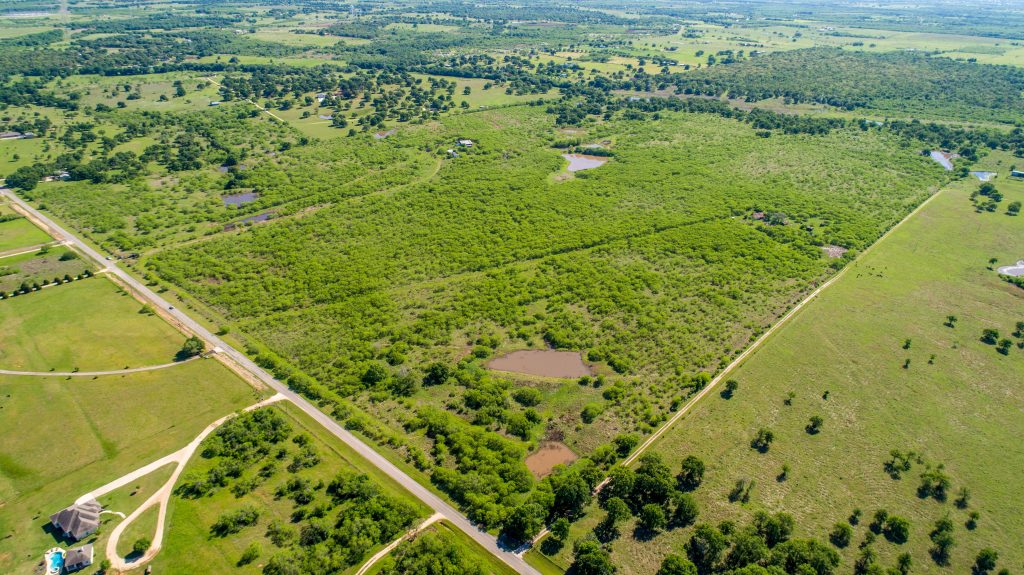



Sorry, the comment form is closed at this time.